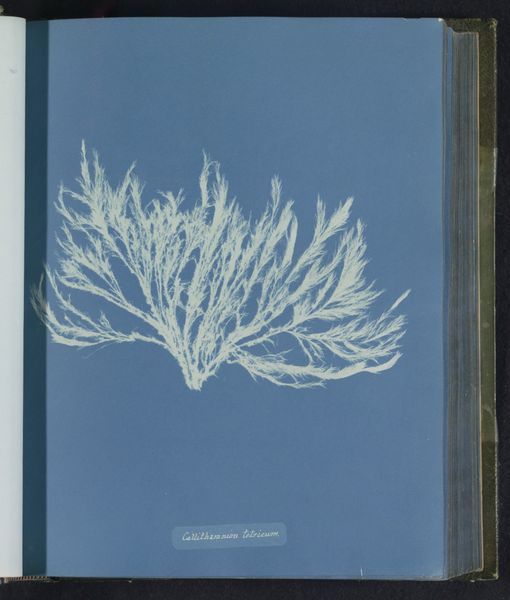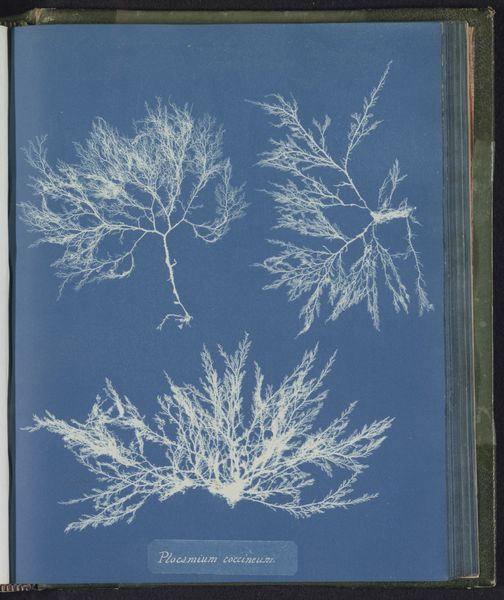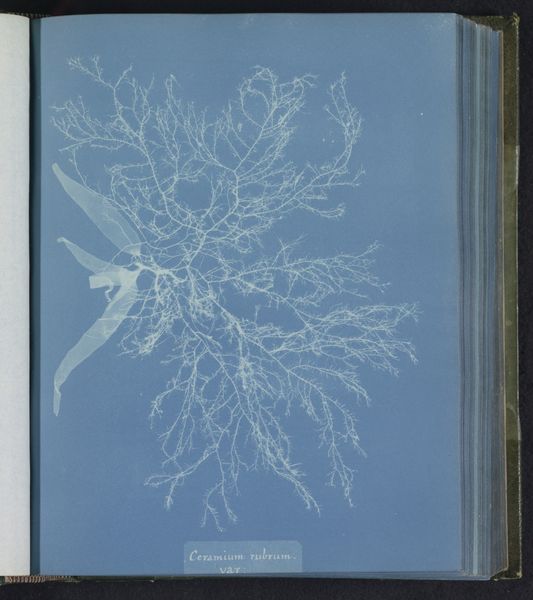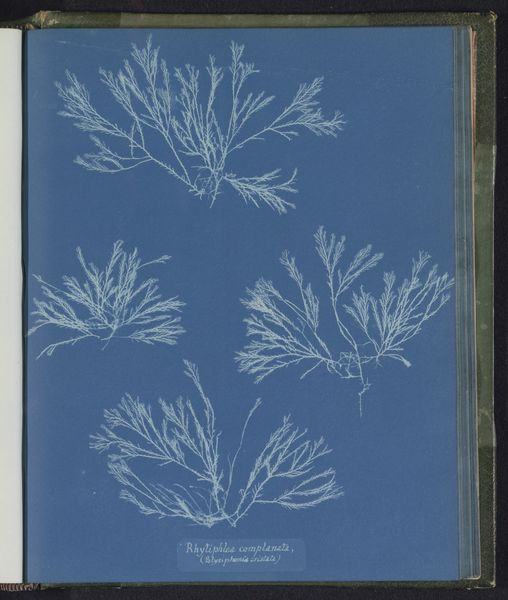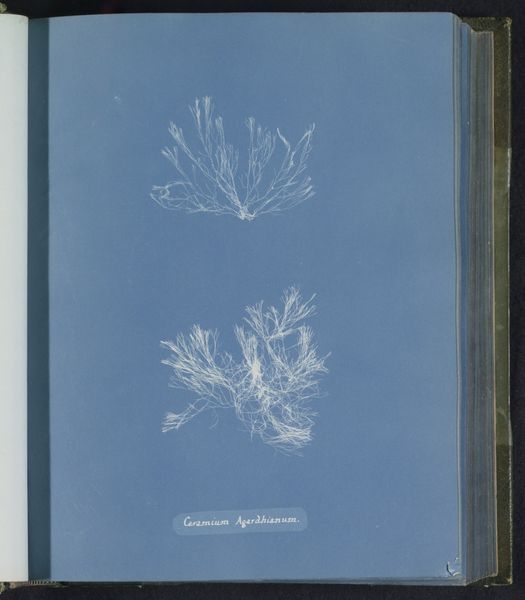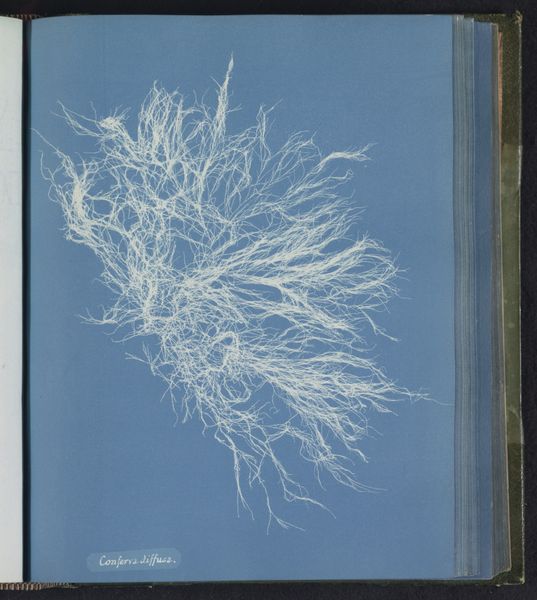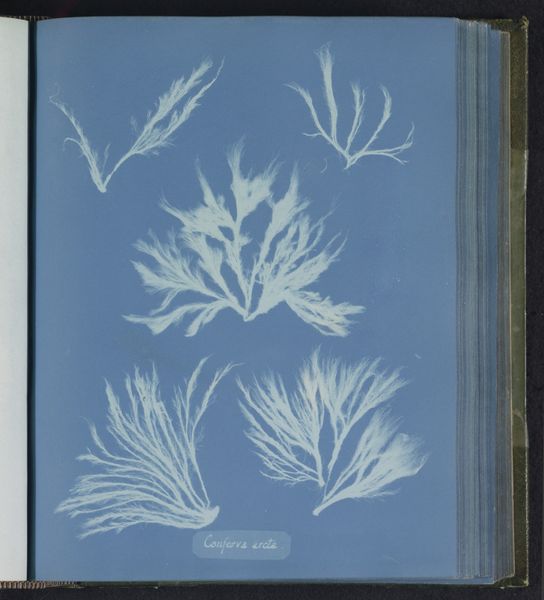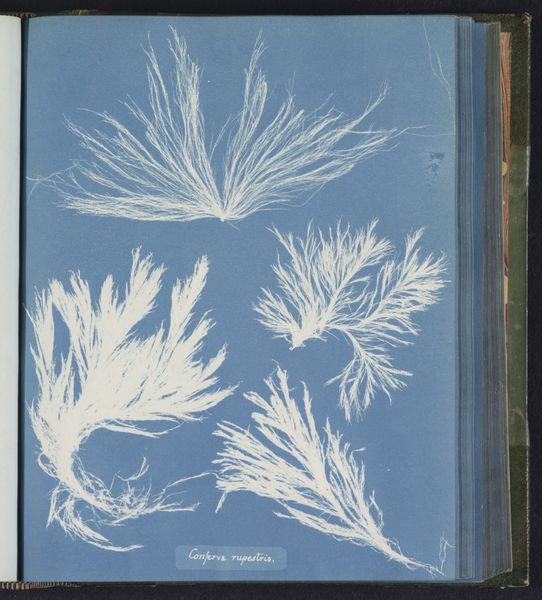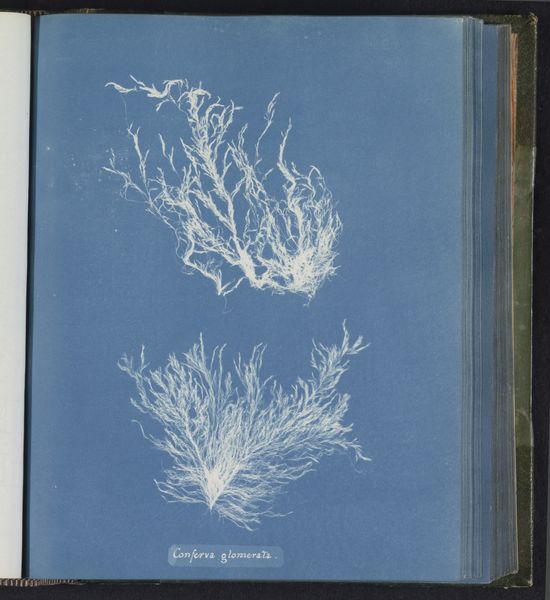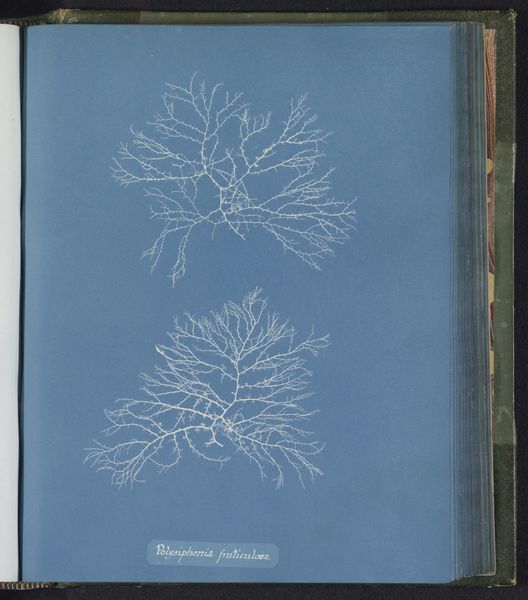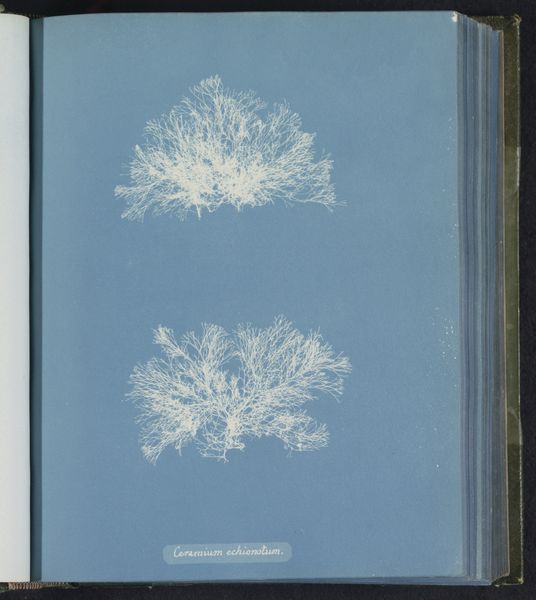![Ceramium botryocarpum / upper spec[ime]n young by Anna Atkins](/_next/image?url=https%3A%2F%2Fd2w8kbdekdi1gv.cloudfront.net%2FeyJidWNrZXQiOiAiYXJ0ZXJhLWltYWdlcy1idWNrZXQiLCAia2V5IjogImFydHdvcmtzLzk3ZDZjMGQxLTUyZjYtNDFiNi1iMjI0LTE1MDc4ZTAwMTM4ZC85N2Q2YzBkMS01MmY2LTQxYjYtYjIyNC0xNTA3OGUwMDEzOGRfZnVsbC5qcGciLCAiZWRpdHMiOiB7InJlc2l6ZSI6IHsid2lkdGgiOiAxOTIwLCAiaGVpZ2h0IjogMTkyMCwgImZpdCI6ICJpbnNpZGUifX19&w=3840&q=75)
print, cyanotype, photography
#
still-life-photography
# print
#
cyanotype
#
photography
Dimensions: height 250 mm, width 200 mm
Copyright: Rijks Museum: Open Domain
Curator: What a lovely, ethereal image. We’re looking at "Ceramium botryocarpum / upper spec[ime]n young," a cyanotype made by Anna Atkins between 1843 and 1853. Editor: It's strikingly delicate. The pale forms of the algae against that intense blue evoke a sense of calm, like looking at a ghost under water. Almost spectral. Curator: It is spectral, in a way. Atkins was a botanist and photographer, and she used cyanotypes—a photographic printing process that produces a cyan-blue print—to document and classify different types of algae. Her work was groundbreaking not only scientifically, but artistically as well. These aren't just documents, but meticulously composed studies of these forms. She wanted to document her studies for publication; as a woman in science, though, she faced challenges in finding publishers who believed in the scientific rigor of a female scientist's work, or found value in documenting specimens with photographs rather than traditional (male) scientific illustrators. Editor: Exactly. This feels very relevant in our contemporary world that continually debates identity. Thinking about the cultural impact of the algae imagery makes me consider a lot about knowledge, how it's codified, who creates it, and what tools or platforms are available. Considering Atkins' access, knowledge of, and privilege relative to her cohort—how did the Victorian social context dictate or circumscribe how the rest of her scientific work was received? Curator: That’s precisely the kind of contextual layering we should explore when considering her work. As someone creating science within an amateur community but still being excluded by larger cultural mores, there’s that interesting tension. In terms of technique, think about what it meant to create the image by direct contact. The plant becomes both subject and agent in the production of its own image. There's something rather magical about that. The work walks the line between science and art. Editor: And it prompts me to question our understanding of each in relationship to one another. This particular print highlights for me a certain interconnectedness in systems and ways of knowing. It helps that this particular algae resembles trees in some ways...perhaps suggesting interdisciplinary knowledge about biology on land as well as the ocean... Curator: Indeed, these cyanotypes by Anna Atkins push us to broaden our definition of art and, most definitely, of science. Editor: It has been very illuminating, especially thinking about it in relation to social norms and access to education at that time. Thank you!
Comments
No comments
Be the first to comment and join the conversation on the ultimate creative platform.
